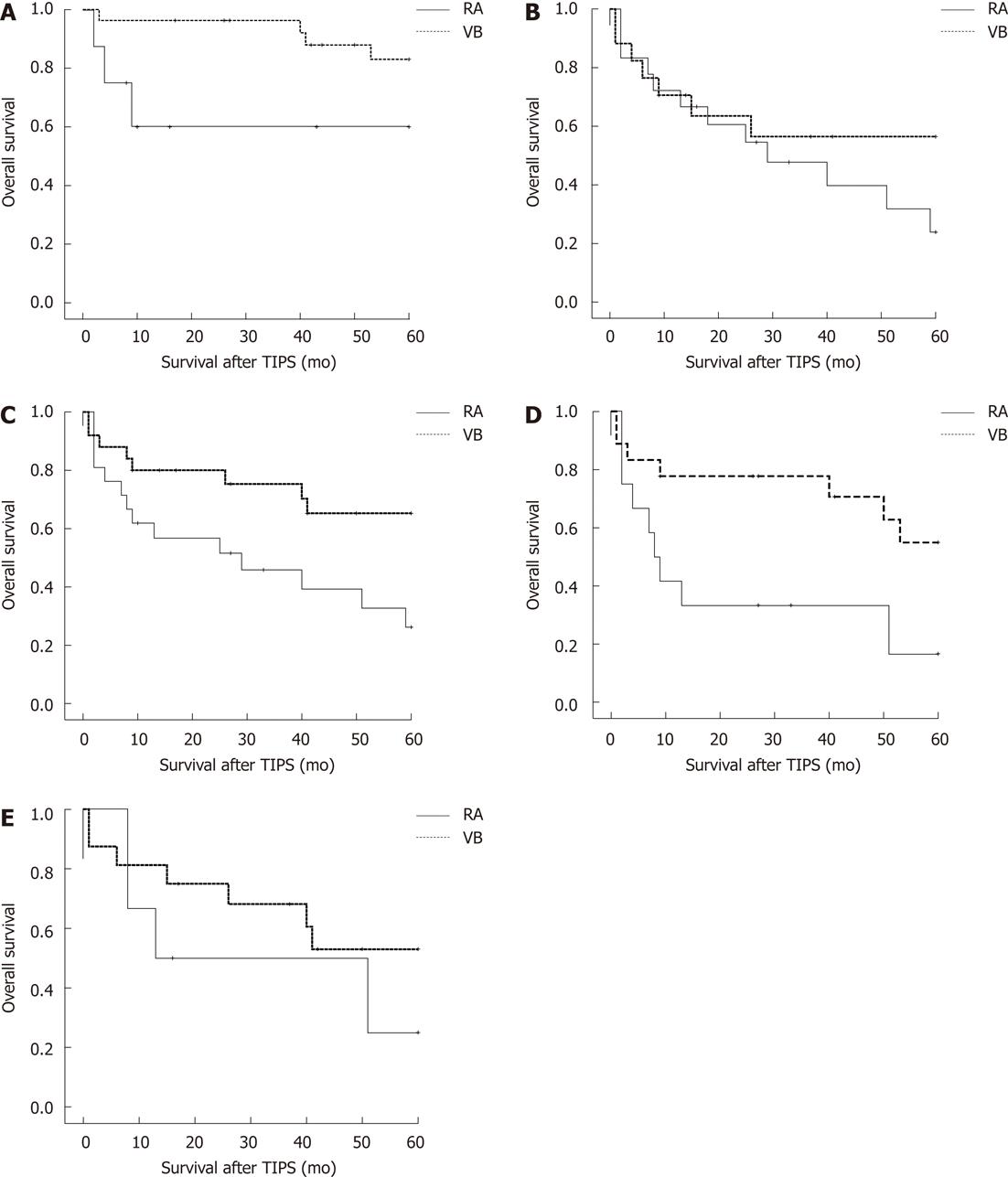Copyright
©2012 Baishideng Publishing Group Co.
World J Gastroenterol. Oct 7, 2012; 18(37): 5211-5218
Published online Oct 7, 2012. doi: 10.3748/wjg.v18.i37.5211
Published online Oct 7, 2012. doi: 10.3748/wjg.v18.i37.5211
Figure 3 Kaplan-Meier survival analysis of patients after transjugular intrahepatic portosystemic shunt placement.
A: Subgroup analysis with patients having a model for end-stage liver disease score (MELD) < 10: Significant difference in overall survival relating to indication [refractory ascites (RA) vs variceal bleeding (VB) group, log rank test P = 0.031]; B: Subgroup analysis with patients having a MELD score > 10: No significant difference in overall survival relating to indication (RA vs VB group, log rank test P = 0.274); C: Subgroup analysis with patients with CHILD B or C cirrhosis: Significant difference in overall survival relating to indication (RA vs VB group, log rank test P = 0.021); D: Subgroup analysis with patients age > 65 years: Significant difference in overall survival relating to indication (RA vs VB group, log rank test P = 0.021); E: Subgroup analysis with stent occlusion at first control: No significant difference in overall survival relating to indication (RA vs VB group, log rank test P = 0.289).
- Citation: Heinzow HS, Lenz P, Köhler M, Reinecke F, Ullerich H, Domschke W, Domagk D, Meister T. Clinical outcome and predictors of survival after TIPS insertion in patients with liver cirrhosis. World J Gastroenterol 2012; 18(37): 5211-5218
- URL: https://www.wjgnet.com/1007-9327/full/v18/i37/5211.htm
- DOI: https://dx.doi.org/10.3748/wjg.v18.i37.5211









